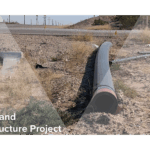
In today’s world, environmental protection plays a crucial role in sustainable development. As industries grow and urban areas expand, the need to identify and mitigate potential environmental risks becomes increasingly important. This is where Phase 1 Environmental Site Assessments come into play. In this article, we will explore the purpose, process, and significance of Phase 1 Assessments, as well as their legal and regulatory aspects and their impact on property transactions.
Understanding the Purpose of Phase 1 Environmental Site Assessments
Phase 1 Environmental Site Assessments are conducted to evaluate the environmental condition of a property prior to any real estate transaction or redevelopment. These assessments provide valuable information about the presence of hazardous substances, pollutants, or contaminants that may pose risks to human health or the surrounding environment.
When it comes to understanding the purpose of Phase 1 Environmental Site Assessments, it is important to delve deeper into the key components that make up these assessments. By doing so, we can gain a better understanding of the comprehensive nature of these evaluations and the critical role they play in environmental protection.
Key Components of Phase 1 Assessments
Phase 1 Assessments involve a comprehensive investigation that includes several key components. Firstly, site inspections and thorough research of historical information are conducted to identify any potential sources of contamination. This meticulous process ensures that no stone is left unturned when it comes to uncovering any environmental risks that may be lurking beneath the surface.
Secondly, interviews with property owners and occupants are conducted to gather additional insight into the property’s environmental history. This step allows for a more holistic evaluation of the property’s condition, as it provides firsthand accounts and perspectives that can shed light on any potential issues that may have gone unnoticed during the initial investigation.
By combining these components, Phase 1 Assessments are able to provide a comprehensive evaluation of the property’s environmental condition. This thorough approach ensures that no potential risks are overlooked, allowing for informed decision-making when it comes to real estate transactions or redevelopment plans.
The Importance of Phase 1 Assessments in Environmental Protection
Phase 1 Environmental Site Assessments serve as a crucial step in preventing potential environmental hazards. By identifying and assessing potential risks, these assessments enable proactive measures to be taken to protect human health and the environment.
Furthermore, Phase 1 Assessments ensure that contaminants are recognized early on, preventing their spread and minimizing their impact. This early detection not only saves time and money but also plays a significant role in safeguarding the surrounding ecosystem.
Ultimately, Phase 1 Assessments contribute to sustainable development and environmental preservation. By conducting these assessments, we can ensure that real estate transactions and redevelopment projects are carried out in a responsible and environmentally conscious manner.
So, the next time you come across a Phase 1 Environmental Site Assessment, remember the meticulous process involved and the importance of these evaluations in protecting our environment for future generations.
The Process of Conducting a Phase 1 Environmental Site Assessment
The process of conducting a Phase 1 Environmental Site Assessment involves several stages to ensure thorough and accurate evaluation.
Initial Site Inspection and Research
During the initial stage, a qualified environmental professional visits the site and examines its physical characteristics. This includes assessing the soil composition, vegetation, topography, and nearby bodies of water. Additionally, comprehensive research is conducted to identify any potential environmental concerns associated with the property or its surroundings.
Moreover, the initial site inspection may also involve assessing the presence of any existing structures or underground storage tanks that could potentially impact the environmental quality of the site. By thoroughly examining the physical features of the property, the environmental professional can better understand the potential risks and challenges that may need to be addressed during the assessment process.
Evaluation of Historical Site Information
Understanding the historical use of the property is critical in conducting a Phase 1 Assessment. This involves reviewing historical records, aerial photographs, and maps to identify any past activities that may have contributed to contamination. By examining the property’s historical context, potential risks can be effectively evaluated.
In addition to reviewing historical documents, conducting interviews with previous owners, tenants, or individuals familiar with the property’s past can provide valuable insights into activities that may have occurred on the site. This firsthand information can offer a more comprehensive understanding of the property’s environmental history and aid in identifying potential areas of concern that require further investigation.
Interviewing Property Owners and Occupants
Direct communication with property owners and occupants provides valuable insights into the property’s environmental history and any potential contamination sources. This information helps in identifying potential sources of environmental risk and ensuring a comprehensive assessment.
Furthermore, interviewing property owners and occupants allows for the identification of any current environmental practices or issues that may impact the site’s overall environmental quality. By engaging with individuals directly connected to the property, the environmental professional can gather additional data to supplement the assessment process and ensure a more thorough evaluation of potential environmental risks.
Interpreting the Results of a Phase 1 Assessment
Once the Phase 1 Assessment is complete, the results and findings are interpreted and reported. This step is crucial in determining potential environmental risks and the need for further investigation or action.
Identifying Potential Environmental Risks
The evaluation of potential environmental risks is a key aspect of Phase 1 Assessments. This involves assessing the presence of hazardous substances, contaminants, or pollutants that may pose a threat to human health or the environment. By identifying these risks, appropriate measures can be implemented to mitigate their impact.
Recommendations for Further Investigation
Based on the findings of the Phase 1 Assessment, the environmental professional may recommend further investigation or action to address any identified risks. This may include Phase 2 Assessments, which involve sampling and laboratory analysis to confirm the presence of contaminants. These recommendations ensure that potential risks are thoroughly investigated and managed.
Legal and Regulatory Aspects of Phase 1 Assessments
Phase 1 Environmental Site Assessments are not only crucial for environmental protection but also have legal and regulatory implications.
Compliance with Environmental Laws and Regulations
Conducting Phase 1 Assessments helps property owners and developers comply with environmental laws and regulations. By addressing potential environmental risks upfront, they ensure compliance with government requirements and minimize the risk of legal consequences or penalties.
Potential Legal Implications for Property Owners
Phase 1 Assessments also reduce the risk of potential legal disputes or liabilities for property owners. By thoroughly evaluating the environmental condition of the property, property owners can demonstrate due diligence and protect themselves from legal claims related to environmental contamination.
The Role of Phase 1 Assessments in Property Transactions
Phase 1 Environmental Site Assessments play a vital role in property transactions, providing valuable information that can have a significant impact on both property value and the overall sale process.
Impact on Property Value and Sale
Phase 1 Assessments influence property value by identifying potential environmental risks that may require remediation. Additionally, having a Phase 1 Assessment report readily available can streamline the sale process, instilling confidence in potential buyers and facilitating smoother negotiations.
Mitigating Risks in Real Estate Investments
Real estate investments involve significant financial commitments, and conducting Phase 1 Assessments helps mitigate potential risks. By assessing environmental conditions before investing, buyers can make informed decisions and protect their investments from potential liabilities or unexpected costs associated with environmental remediation.
In conclusion, Phase 1 Environmental Site Assessments are essential in protecting the environment, ensuring compliance with regulations, and minimizing risks in property transactions. From the initial site inspection and research to the interpretation of findings, these assessments provide valuable information that enables informed decision-making and sustainable development. By recognizing the importance of Phase 1 Assessments, we can collectively contribute to the preservation of our environment while safeguarding the interests of property owners and investors.
Ready to ensure your real estate investment is environmentally sound and compliant with all regulations? ESE Partners is here to guide you through the complexities of environmental challenges. With our team of expert environmental engineers and scientists, we offer tailored solutions in due diligence, remediation, compliance, and more. Let us help you responsibly move your business forward while improving community quality of life. Request A Proposal today and partner with a firm that delivers honest, quality-driven results.








